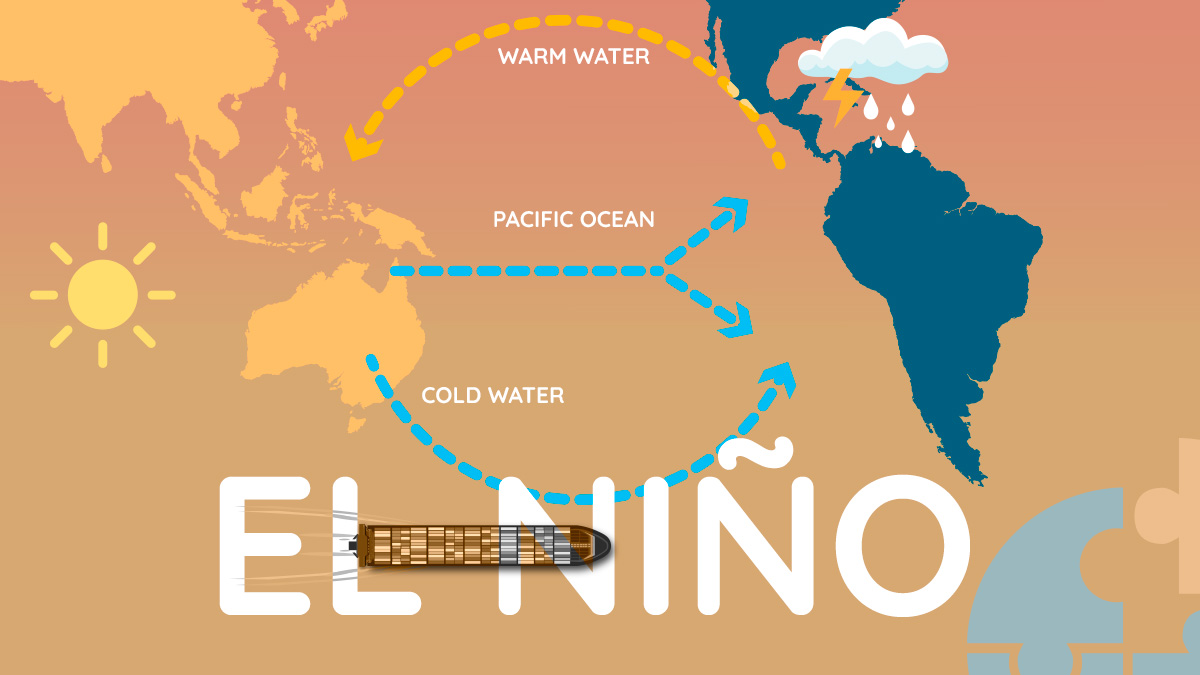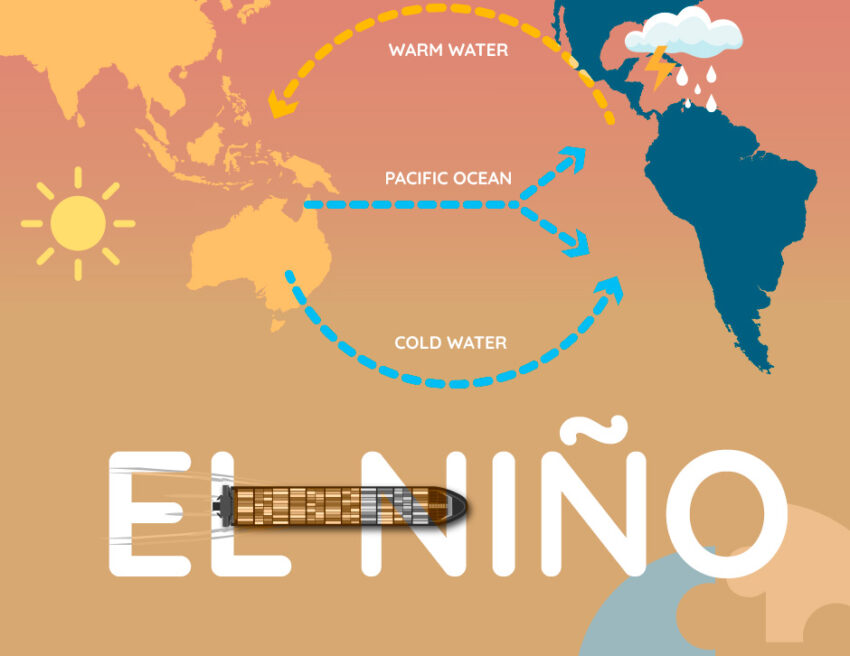The unforeseen warming of the eastern Pacific Ocean, commonly referred to as the El Niño phenomenon, has become another addition to the growing list of climate-induced weather events causing disruptions in the global container shipping industry. Maritime analysts suggest that the occurrence of El Niño, a naturally recurring phenomenon with a typical cycle of every two to seven years, could exacerbate challenges in crucial maritime routes and supply chains worldwide. Although its usual peak occurs around December, the full impact of El Niño will take some time to reverberate across the globe. In today’s blog, we will talk about how El Niño is affecting the container shipping industry, with a special focus on the drought in the Panama Canal and its implications for the maritime sector.
Defining the El Nino
The term “El Niño” is commonly used to describe the periodic warming of sea surface temperatures, typically concentrated in the central-east equatorial Pacific region. An official declaration of an El Niño event occurs when sea temperatures in the tropical eastern Pacific rise by 0.5°C above the long-term average. Its impact is particularly pronounced in the tropical eastern Pacific, leading to warmer-than-average weather conditions.
Despite the recent occurrence of a cooling La Niña over the past three years, the world has witnessed the eight warmest years on record. Acting as a temporary brake on the overall increase in global temperatures, this La Niña phenomenon has had a mitigating effect. However, Professor Petteri Taalas, the Secretary-General of the World Meteorological Organization (WMO), emphasizes that the emergence of an El Niño is likely to initiate a fresh surge in global warming, increasing the probability of breaking temperature records.

How the El Nino is impacting the international supply chain
The impacts of El Niño on global trade can vary depending on the region and industry, but certain general effects should be considered. Global sourcing supply chains, in particular, may face potential challenges, notably in the case of the Panama Canal, where diminished water levels can impede shipping speed through this crucial waterway. Additionally, various sectors may encounter a spectrum of issues due to El Niño.
El Niño can disrupt maritime transportation by altering weather conditions, including storms and heightened wave heights resulting from increased Tropical Cyclones in the Pacific. This disruption may lead to port closures, delays in shipments, and elevated transportation costs. Consequently, trade flows may be affected, potentially impacting the punctual delivery of goods and the overall stability of global supply chains.
A look at the drought in the Panama Canal
The congestion currently experienced at the Panama Canal coincides with the recent declaration by the United Nations weather agency of the onset of El Niño. This weather phenomenon is anticipated to contribute to a rise in global temperatures and the emergence of extreme weather conditions.
In the face of a severe drought in Panama, the Central American nation has been compelled to reduce the number of vessels permitted to transit through the critically important Panama Canal. These restrictions have resulted in a backlog of ships awaiting their turn to navigate this route, which significantly shortens travel time between the Atlantic and Pacific oceans. The Panama Canal Authority, responsible for managing the waterway, recently stated that these measures were deemed necessary due to “unprecedented challenges” and emphasized that the extent of this year’s drought had no historical precedent.
Maritime analysts have raised concerns that the extreme weather conditions driven by the climate crisis may increase the occurrence of incidents similar to the Ever Given blockade. This, in turn, could lead to extensive repercussions for supply chains, food security, and regional economies.
Drought situation elsewhere
Although the Panama Canal stands out as a shipping route particularly vulnerable to climate-related challenges, it is not the only waterway contending with the repercussions of extreme weather. The ocean freight shipping industry faces potential additional setbacks due to low water levels on the Rhine River, a vital trade route extending from Germany through various European cities to the port of Rotterdam in the Netherlands.
Climate risks in shipping chokepoints
In a report released late last year, global insurance broker Marsh underscored the imperative for a more comprehensive understanding of vulnerabilities associated with maritime chokepoints, particularly in light of the increasing frequency of climate-induced disruptive weather events. Specifically addressing the Suez Canal, Marsh highlighted two distinct physical risks exacerbated by the climate emergency: coastal inundation, where rising sea levels could inundate critical infrastructure, and the escalating likelihood of extreme heat events.
Marsh’s analysts emphasized that any disruption to the five major waterways due to El Niño could extend far beyond the realm of global supply chains. These significant waterways include the Suez and Panama canals, the Strait of Malacca situated between Indonesia and Malaysia, the Strait of Hormuz connecting Iran and Oman, and the Bab-el-Mandeb located between Djibouti and Yemen.


